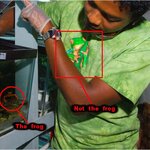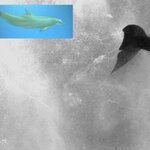Ecology & Zoology

Biologists at The University of Nottingham and University College Dublin have announced a major breakthrough in our understanding of the sex life of a microscopic fungus which is a major cause of death in immune deficient patients and also a cause of severe asthma.
The discovery of a sexual cycle in the fungal pathogen Aspergillus fumigatus is highly significant in understanding the biology and evolution of the species and will shed new light on its ability to adapt to new environments and its resistance to antifungal drugs. It is hoped the results of this research will lead to new ways of…

Keeping tropical rain forests intact is a better way to combat climate change than replacing them with biofuel plantations, according to a new study published in Conservation Biology.
The study reveals that it would take at least 75 years for the carbon emissions saved through the use of biofuels to compensate for the carbon lost through forest conversion. And if the original habitat was carbon-rich peatland, the carbon balance would take more than 600 years. On the other hand, planting biofuels on degraded Imperata grasslands instead of tropical rain forests would lead to a net removal of…

A new frog species has been discovered in Panama and will be announced in the December issue of Journal of Herpetology by a research team led by STRI former visiting scientist Joseph Mendelson, from Zoo Atlanta.
The amphibian, a type of tree frog with bright reddish- and green-colored skin that grows to a length of 122 mm was discovered by Edgardo Griffith while working with Mendelson in El Valle. Mendelson was head of the Amphibian Recovery Project in 2005 under the STRI umbrella. Today, Griffith is the director of the El Níspero zoo's Amphibian Conservation Center in the Valle de Anton,…

You've heard it before. According to the laws of physics, bees can't fly. Yet fly they do. And British zoologist Sir James Gray noticed something strange about dolphins in 1936. He had observed the sea mammals swimming at a swift rate of more than 20 miles per hour, but his studies had concluded that the muscles of dolphins simply weren't strong enough to support those kinds of speeds. The conundrum came to be known as "Gray's Paradox."
For decades the puzzle prompted much attention, speculation, and conjecture in the scientific community. But now, armed with…

A Spanish research study has tested different combinations of supports and indigenous plants to determine which are the best for reducing energy consumption inside buildings. This type of roof is a “rurban”, sustainable architectural solution that will lead to a reduction in environmental and acoustic contamination levels in cities, and be visually pleasing.
Researchers from the Polytechnic University of Madrid (UPM) have built a roof covered with plants and a watering system that will optimise the consumption of a building’s heating and cooling systems thanks to its insulation. It is a third…

At a younger age I was completely enthralled with undersea life. Since high school biology, the difference between freshwater anatomy and marine physiology led me conduct some not so nice tests on goldfish. Hey, they were only 10 cents each, plus, I wanted to see if osmosis really worked differently with cells from saltwater fish. I couldn't just trust the teachers, after all. As I entered a marine biology course, I found marine life to be even more interesting, particularly due to their evolution.
What always interested me was an organism's ability to manipulate it's sex. Most reef…

More than 11,000 alien species have been documented by DAISIE (Delivering Alien Invasive Species Inventory for Europe), a unique three year research project with more than 100 European scientists, funded by the European Union that provides new knowledge on biological invasions in Europe. Biological invasions by alien species often result in a significant loss in the economic value, biological diversity and function of invaded ecosystems.
The majority of these 11,000 alien species are however, not harmful. About 15 percent of these alien species cause economic damages and 15 percent…

One of the most important developments in human civilization was the practice of sustainable agriculture, but we were not the first - ants have been doing it for over 50 million years. Just as farming helped humans become a dominant species, it has also helped leaf-cutter ants become dominant herbivores, and one of the most successful social insects in nature. According to an article in the November issue of Microbiology Today, leaf-cutter ants have developed a system to try and keep their gardens pest-free; an impressive feat which has evaded even human agriculturalists.
Leaf-cutter ants put…

Humans would never agree that elections sometimes come down to looks. Science disagrees. Some argue that Barack Obama won because he looks younger and healthier than John McCain while others contend that having twice as much money makes any candidate more likely to win and about three people actually voted based on the issues.
A new report in the November 13th issue of Current Biology says that one species of fish picks its leaders in much the same way; most of the time they reach a consensus to go for the more attractive of two candidates.
"It turned out that stickleback…

Dishonesty may be more widespread in the animal kingdom than previously thought. A team of Australian ecologists has discovered that some male fiddler crabs “lie” about their fighting ability by growing claws that look strong and powerful but are in fact weak and puny.
Yes, the authors say, the study is the first direct evidence that crabs “bluff” about their fighting ability and they detail it in Functional Ecology.
The signals animals send each other about their fighting prowess - and the honesty of these signals - is a long-standing problem in evolutionary biology. Despite their size -…